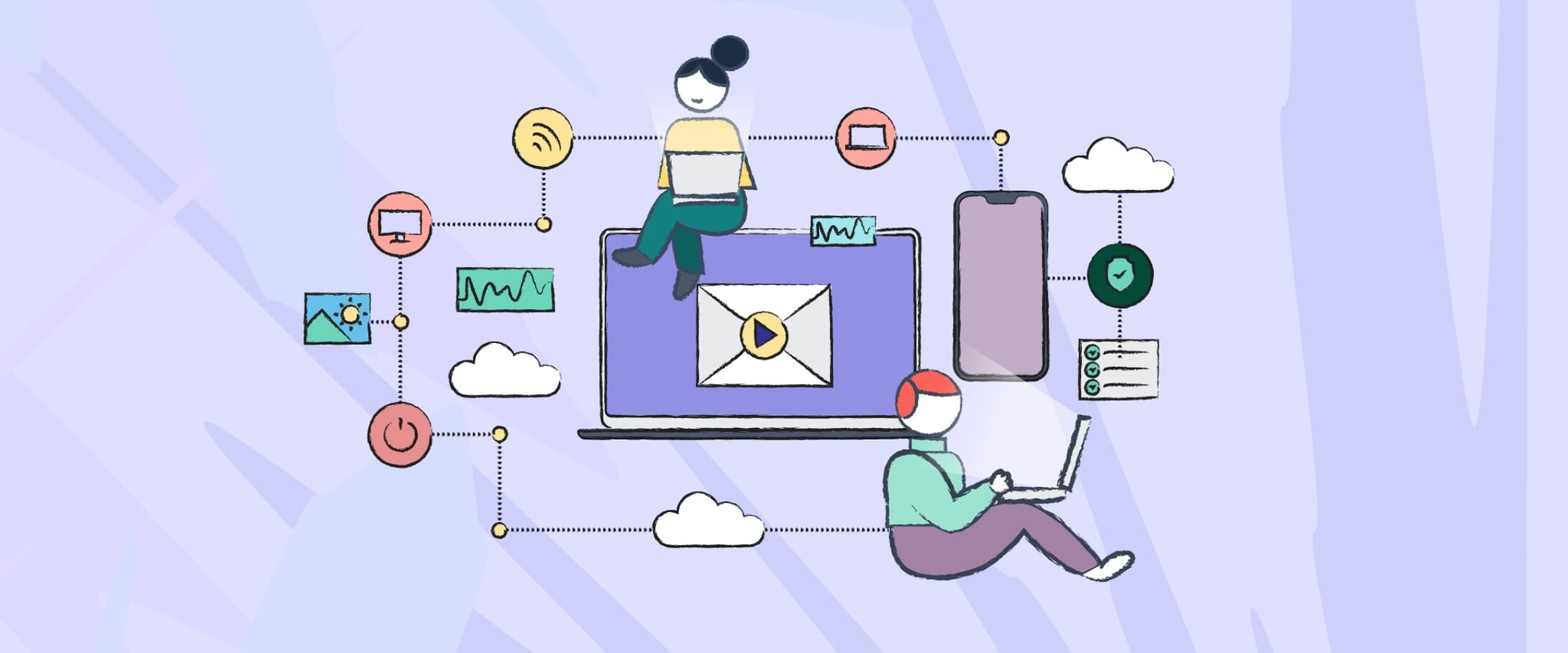Recruiting the right talent is crucial for any company’s success, but navigating the ever-evolving landscape of recruiting technologies can be daunting. A recent webinar featuring Mark Tortora, Staff Recruiting Operations Lead at Squarespace, and Amit Bhatia, Co-Founder and CEO of Datapeople, offered valuable insights on building a winning talent acquisition technology stack.
Prioritizing user experience
Mark reflected on his talent acquisition technology stack leadership as Squarespace scaled from a small company to a publicly traded entity with Super Bowl ads. In his words, their evolution underscored the importance of adapting their recruiting strategies, and the technology that powers them, to meet changing organizational needs.
He argued that recruiting tools shouldn’t just check boxes; they should be user-friendly for both recruiters and candidates. They should inspire and nurture the delivery of a consistent, seamless candidate experience, which is essential for attracting top talent and building a strong employer brand.
Choosing the right partner and integration
A key theme of the discussion was the significance of selecting the right vendor or partner team. Mark emphasized factors such as growth trajectory, brand identity, and integration capabilities when evaluating potential partners.
He highlighted the importance of seamless integration with the company’s applicant tracking system (ATS) and (possibly) human resources information system (HRIS). His examples illuminated the potential to ensure a smooth workflow that avoids data silos and eliminates the need for clunky manual processes that can frustrate users. Two-way data flow is key, he explained, not just to power real-time updates across the entire hiring workflow but to truly secure user adoption and build impactful habits.
Evaluating AI eyes wide open
Both Amit and Mark stressed the potential, and importance, of using AI to enhance work efficiency while balancing it with human input to mitigate bias. They delved into the challenges of evaluating AI products, particularly in light of data security and privacy regulations like GDPR and CCPA. Mark suggests involving key stakeholders like security and legal teams in the selection process. Understanding how AI tools handle data and their potential impact on diversity and inclusion efforts is crucial.
Nurturing internal relationships
Though the discussion centered on recruiting technology, it highlighted how important interpersonal elements are when designing a high-performance tech stack that delivers on its promises. Building strong relationships with internal partners is a must. Clear communication and effective change management are essential for the successful implementation and adoption of new tools. Collaboration with hiring managers is key to ensuring their needs are met and the recruiting process is efficient.
Standardized processes breed confidence, fairness, and trust
The webinar emphasized the importance of standardization in recruiting processes and data analysis. Standardizing workflows helps ensure candidate consistency and facilitates better decision-making. This includes evaluating candidates, keeping diversity and inclusion at the forefront, and moving away from reliance on error-prone spreadsheets.
Standardization creates a predictable and efficient experience for both candidates and hiring teams. Training hiring managers equips them with the skills and knowledge to conduct effective interviews and make sound hiring decisions.
Reducing bias and increasing diversity
Mark underscored the importance of reducing bias and increasing diversity and inclusion efforts in recruiting. He highlighted the potential for the talent acquisition technology stack, and the consistent workflow it powers, to help the entire hiring team embrace best practices and actively avoid bias in their hiring activities.
Building candidate rapport
The webinar strongly encouraged building rapport with candidates throughout the hiring process and how your technology tech stack contributes to this effort. Providing timely updates, even when there’s no news, demonstrates respect and keeps candidates engaged. Recruiting isn’t just about technical skills; it’s about building relationships and creating a positive candidate experience.
Mark discussed the challenges of interview scheduling and the importance of clear communication with both candidates and hiring managers. While interview scheduling tools can offer some benefits, it’s crucial to consider their limitations. These tools may not handle last-minute changes, high-touch situations, or different time zones effectively.
Measuring for consistent improvement
Standard recruiting metrics like time to fill are important, but the discussion emphasized looking at a broader range of data points. Understanding what story the data tells and whom it’s telling it to is essential. Companies with access to multiple data sources, like business intelligence connectors and custom dashboards, can gain deeper insights into their recruiting process.
The future of the talent acquisition technology stack
Building a winning recruiting tech stack requires careful consideration. As Mark and Amit shared in the webinar, by prioritizing user experience, ensuring seamless integration, and fostering a positive candidate (and hiring team) experience, companies can attract top talent and build a strong employer brand. The discussion touched on the potential of AI to connect disparate data points and streamline recruiting tasks. This can free up recruiters’ time for more strategic human-centric activities. However, Mark stressed the importance of compliance and data standardization for the impactful use of technology and the effective use of AI in recruiting.
Remember, recruiting technology is just one piece of the puzzle; collaboration, clear communication, and a focus on building relationships are also essential for true sustained long-term success.
Learn more about talent acquisition technology stack best practices by considering the partner and integration ecosystem for your specific ATS, such as Workday. For more information about how the Datapeople platform can become your compliance and standardization catalyst, schedule a demo.
